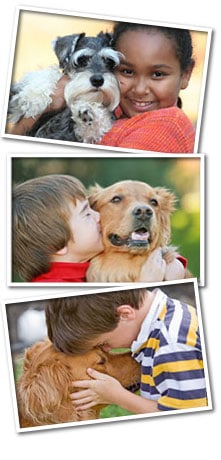Preparing your pet for fall is essential to ensure their comfort, safety, and well-being as the weather changes. Here are some steps you can take to get your pet ready for the fall season:
- Grooming: Depending on your pet’s breed and coat length, consider giving them a good grooming session. This can help remove any loose hair and mats that may have accumulated during the summer. It can also help regulate their body temperature as the weather gets cooler.
- Update Identification: Ensure that your pet’s collar has updated identification tags with your current contact information. Fall is a time when pets may be more prone to wandering, so having proper identification is crucial.
- Adjust Diet: As the weather cools down, some pets may need more calories to stay warm, while others may need fewer if they are less active. Consult with your veterinarian to determine the appropriate diet for your pet during the fall season.
- Outdoor Safety: Be mindful of potential hazards in your yard or outdoor areas. Falling leaves can hide dangers like sticks, sharp objects, or toxic plants. Rake leaves regularly to keep the area safe for your pet.
- Warm Bedding: Make sure your pet has a warm and comfortable place to sleep, especially if they spend a lot of time outdoors. Consider providing extra blankets or a heated pet bed to keep them cozy.
- Exercise and Mental Stimulation: Continue to provide regular exercise and mental stimulation for your pet, even as the weather cools. This can help prevent boredom and behavior problems.
- Check for Allergies: Fall can bring new allergens, such as mold and pollen. Watch for signs of allergies in your pet, such as itching, sneezing, or watery eyes, and consult your veterinarian if you suspect an issue.
- Pet-Safe Heating: If you use space heaters or a fireplace, ensure they are pet-safe and inaccessible to your pet. Pets may be attracted to warm spots, but these can pose fire hazards or cause burns.
- Keep Them Dry: Fall often brings rain. Make sure your pet stays dry when going outside. Invest in a good-quality pet raincoat, and wipe their paws and belly when they come inside to prevent tracking in mud and dirt.
- Update Flea and Tick Prevention: Check with your vet to see if you need to adjust your pet’s flea and tick prevention regimen, as these pests can still be active in the fall.
- Halloween Precautions: If you plan to celebrate Halloween, be mindful of the potential hazards it can pose to your pet. Keep chocolate and candy out of reach, and be cautious with costumes and decorations that your pet could ingest or become entangled in.
- Fall Pet-Safe Plants: If you decorate your home with plants, make sure they are not toxic to pets. Some common fall plants, like poinsettias and mums, can be harmful if ingested.
- Regular Vet Check-Up: Fall is an excellent time for a regular veterinary check-up. This can help catch any potential health issues before they become more serious.
By taking these steps, you can ensure that your pet has a safe and comfortable transition into the fall season. Remember that every pet is unique, so consider their individual needs and consult with your veterinarian for specific guidance on how to care for them during this time of year.

